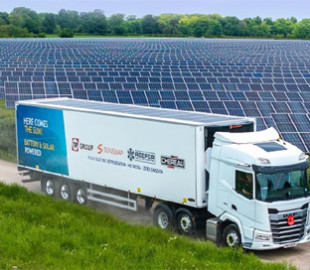
In the UK, trials of a refrigerated semi-trailer of the new Sunswap refrigeration system have begun, which does not have the traditional internal combustion engine of a refrigerator, but has 12 solar panels on the roof panels.
The solution with 12 “solars” on the roof is based mainly on solar energy. The first calculations show that it will be much cheaper to operate than a conventional diesel unit. This is indicated by the magazine coldchainfederation.org.uk with reference to the developers.
The system, called Sunswap Endurance, is based on a new design of an electric refrigeration unit. It is completely devoid of an internal combustion engine, but has a modular battery for an electric motor. Another element is the photovoltaic panels placed on the roof – there are twelve of them and they cover the roof area along the entire length of the trailer.
The company has supplemented this with its own control module, which is based on low voltage (400 V) for greater reliability. The above solution was installed in a Chereau trailer equipped with improved HFO foam insulation panels.
The refrigerated vehicle was transferred to the leasing company TIP, which delivered an electric refrigerator to one of its customers, a large company from the British food industry. There, the semi-trailer will undergo 12 months of testing.
Sunswap itself estimates that the photovoltaic panels will be able to provide electricity for approximately 80 percent of the generator's operating hours. Given the British weather conditions, this would be a really great result.
The remaining 20 percent will come from charging the battery from an external power source, such as a charger placed on the base. As a result, cooling costs will be 80-90 percent lower than using an internal combustion engine generator.
Sunswap claims that a full charge of the batteries will maintain temperature for 24 hours for frozen loading, for 48 hours for multi-temperature loading with continuous cooling or within 2-3 months for cooled loading in economy mode.

